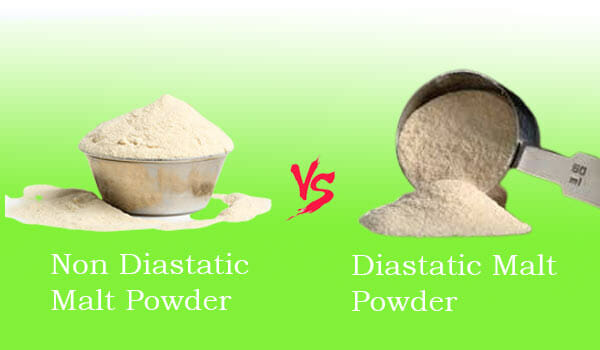Malt powder is a go-to ingredient for most bakers when it comes to rising bread and bagels. The powder also gives the bread a better flavor and color overall, contributing to a better baking experience. However, there are two different types of malt powders.
As both are malt powers, you might think they are the same. But are they the same? We have done tons of baking with both versions to get to the bottom of the topic.
And in this discussion regarding diastatic vs non diastatic malt powder, we will discuss everything. So, if you want to know all about the powders, stick till the end.
What Is Diastatic Malt Powder and How to Use It?
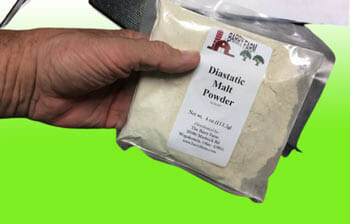
When we talk about diastatic malt powder, we refer to the powder of ground malted barley that still has the naturally occurring enzymes. Yes, this version comes in its natural form and does not go through any alternations.
And like regular malt, it will make the bread rise and enhance the flavor and color of the bread.
Advantages of Diastatic Malt Powder
As the naturally occurring enzyme of the ground malted barley still remains intact in this version, it offers all of the benefits that a natural malt powder can offer. That includes:
Boost Yeast Activity
Thanks to the enzymes, the yeast activity inside the dough increases. The enzymes breaks the flour starch into sugar; which is the food that yeast will eat. Eventually, the bread will start to rise exceptionally fast.
Enhances the Sweetness
As mentioned earlier, the enzymes will break the starch into flours. That will convert the starch into food for the yeast and enhance the overall sweetness of the bread. Eventually, you can use comparatively less sugar in your dough.
Provides Better Color and Flavor
The diastatic malted powder is generally added to bread and all-purpose flour to give the baked goods better color and flavor overall.
The Secret of Non Diastatic Malt Powder
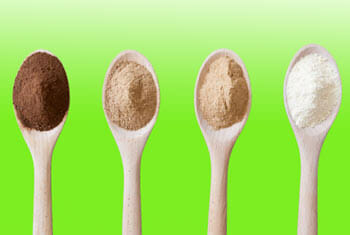
The non-diastatic powder also comes from barley. But it does not have the naturally occurring enzymes active in it. As a result, it has a different set of characteristics. Nonetheless, it is still great for enhancing the flavor and darkening the looks.
Advantages of Non Diastatic Malt Powder
The non-diastatic powder brings a lot of things to the table. But among all of them, these are the main benefits that the powder is well-known for:
Adds Sweetness
The non diastatic malt powder is going to add sweetness to the bread. However, it will not break down the starch from the flour that quickly, which will eventually make the bread rise slowly.
Gives the Bread a Dark color
Other than just adding sweetness to your bread, the non diastatic malt powder will darken it. That color gives your baked goods a unique presentation.
Flavor
Finally, the non-diastatic powder will make your bread obtain a unique taste. A lot of the bakers add it with yeast just for the flavor that it brings to the table.
What's The Difference Between Diastatic and Non Diastatic Malt Powder
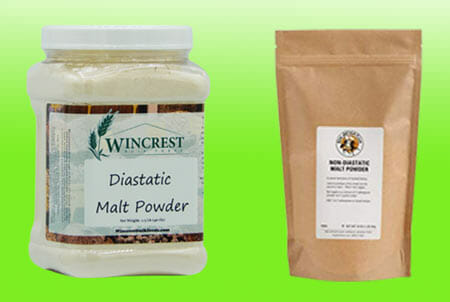
Even though both of the malt powders are there to aid the baking process, some things make them different. A few of those differences are discussed below:
Rise Of the Bread
The first difference between them is that one contains natural enzymes. And the one that contains the natural enzymes is the diastatic malt powder. The enzymes break down the flour starch and aids in yeast activity.
That will eventually make the bread rise faster than usual. However, the case is not the same for non-diastatic powder. This powder does not enhance the activity of the yeast, which will eventually make the dough rise at the usual rate.
Coloring of the Crust
In comparison, the diastatic malt powder will change the color of the crust in the most pronounced way. It will make the crust a little bit darker. However, if you use too much of the powder, the crumb of the bread can become gummy.
Sweetness
As the diastatic malt powder will break down the starch of the flour and convert them into sugar, your baked goods will be sweeter than usual. On the other hand, the non-diastatic malt powder will also increase the sweetness.
Common Application of Non Diastatic and Diastatic Malt Powder
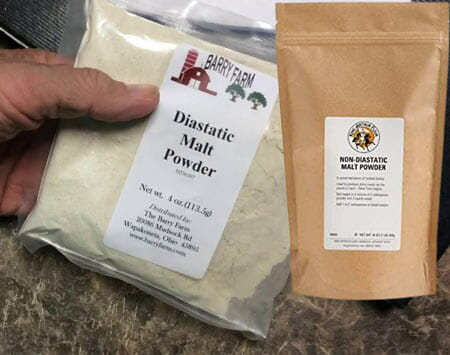
As you know by now, the malt powders will enhance the quality of the baked goods. However, you will not get the expected results without knowing which one to use at what time.
Non Diastatic Malt Powder
The non-diastatic powder does not have natural enzymes in it. That’s why it will not help to make the bread rise faster. So, if you plan to make the baked good gain a sweet flavor and want it to become a bit dark in color, the non diastatic should be your pick.
Diastatic Malt Powder
The diastatic malt powder will offer you all of the things that the non diastatic is capable of offering. However, it makes the bread rise faster. It aids the yeast and enhances the activity, which will make the bread rise in a short amount of time. So, the diastatic should be you go to pick if you want to bake goods quickly.
Frequently Asked Questions
What flour will the diastatic malt powder go well with?
Savvy bread bakers will use the powder almost every time they utilize flour that does not have barley malt added. Also, the malt powder will add more flavor and color to the bread.
How much of diastatic malt powder should I use?
The diastatic malt powder should not be more than 0.2 percent of the flour’s weight when it comes to the measurement. Anything higher than that can make the bread become a little gummy on the inside.
Final Words
To wrap things up, when it comes to diastatic vs non diastatic malt powder, the main difference is the natural enzymes. And the enzymes are only present in the diastatic malt powder, which is capable of making the bread or baked goods rise exceptionally fast.
Also read:
SeaRanchLodge.com is a participant in the Amazon Associate program and will earn from qualifying purchases.


